India remains one of Outbrain’s fastest growing markets: Sandeep Balani
There is always a revolution happening within the digital media landscape. With the advent of new technologies, the digital playing field is constantly evolving. The market waits for no one, and what sets successful businesses apart is how quickly they adapt to change.
Traditionally, marketers have relied on display advertising for revenue, but consumers have reached a breaking point with display ads and are now finding the idea of blocking them alluring. Growing at a staggering rate of over 40 per cent year-on-year globally, ad blockers are hitting publisher revenues like never before.
Faced with an urgent need to find new ways of monetising, publishers are turning to content in a bid to stay relevant and profitable.
In conversation with AdGully, Sandeep Balani, Director, Business Development, India, Outbrain, speaks about the ways publishers can drive business results through content and reap the benefits content marketing brings to the table.
Beyond tapping on content programming technologies like Outbrain’s Automatic Yield and building video inventory to increase monetisation, Balani also shares the following:
News aggregator apps: With digital content consumption on the rise, the demand for customised and curated content that is both diverse and relevant has been increasing. Many publishers are using news aggregator apps to amplify their content, increase brand awareness and grow their audience. India, which is becoming increasingly wired, has seen a slew of news aggregator apps in recent years, such as DailyHunt and News In Shorts, and just recently, UC News.
Facebook Instant Articles: Facebook Instant Articles speeds up a user’s mobile experience and makes it more seamless, ultimately changing the means and frequency of mobile content discovery. While Facebook is a great platform for publishers to market their own properties and brands, publishers should be cautious about feeding all content to Facebook, as this might cause users to grow accustomed to experiencing content on Instant Articles, rather than on the publisher’s own site.
Google AMP: Google AMP joins the latest series of platforms that signal a shift to mobile. As display ads get squeezed out of a mobile-first world, native is a huge opportunity for publishers. Not only are publishers able to speed up loading of their mobile content through Google AMP, they can also monetise it through content recommendation.
When it comes to content marketing in India, what are the factors that define its growth?
One of the opportunities we’ve seen in India lies with the growth of mobile; nearly half of our network’s recommendations in India come via mobile or tablets. As such, we have invested a lot of effort into developing our mobile offering. For instance, content recommendations can be integrated within publishers’ mobile sites or apps through our SDK, while publishers have a wide variety of options and flexibility in terms of how the content is recommended across different formats, platforms and so on. With mobile consumption on an upward trend, audience demand for mobile content will continue to grow – and publishers who adapt their mobile strategies accordingly will be far ahead of the competition.
What do you envisage as the major challenges in the growth of content marketing in India?
Talent is one challenge that we are facing across the industry today. While there is plenty of emphasis on the role of digital and content, and the growing investments, there appears to be a lack of investment in developing skills and talent. It can get tough finding suitable talent needed to run high quality content marketing programmes that match up with those we’re seeing from more developed digital markets. With many businesses only beginning to recognise the need and value for content industry talent, there is an urgent need for always-on education, training and accreditation programmes.
What is the size of the global content marketing sector? How does India compare vis-a-vis the global market?
According to statistics from MediaPost, global content marketing revenues (money generated by operators who provide content marketing services) increased by 14.4% during the first half of 2015, with this figure predicted to increase by more than two-fold by 2019. This is in line with trends we’re seeing in the India market - an interview by CXO Today with 380 India CMOs revealed that 84 per cent of them had plans to increase their content marketing budget in 2015, and it was found in another study by eMarketer that 64 per cent of India marketers find content marketing increases brand awareness and plays an integral role in attracting and retaining customers.
More interestingly, with a growing influence of home-grown celebrities, this content marketing revolution has resulted in a phenomena of ‘e-Celebs’ in India - who according a report published by Ernst and Young (EY), are able to gain mass popularity with the creation of their own niche content areas. Indian brands are also observed to create more content around the festive season, in order to build recognition and drive consumer demand.
Globally, what are the key ways in which brands are using data to drive results with content today?
On a global scale, brands are becoming more mature in their understanding of content, and resultantly, have started to tell stories with data. Data, for instance, can lend support to creating a headline that not only achieves a high CTR (click-through rate), but also draws in the right audience. It is in the interest of brands to keep testing for the headline that works best because it is the user’s first point of interaction with any content. Through the sheer scale of data and content that Outbrain analyses, we are able to work more efficiently with brands to deduce the elements that make the perfect headline, and the types of images that work well.
We are also seeing brands team up with data scientists and analysts to make meaningful, actionable business recommendations from the data sets collected. Rather than amassing every kernel of data, brands are seeing the relevance of their data to business and consumer decisions, and are taking a step back to reconsider how processes can potentially be improved.
What are the factors that content marketers need to keep in mind while optimising video for higher engagement?
It is also important to consider how content is best optimised on different platforms. YouTube, Vimeo, Wistia, Facebook are all great places to host videos, but all these platforms have different features suitable for certain types of content, messaging, and brand strategies. Take for instance, how Facebook users need to actively enable sound to their video because the default audio setting on the platform is muted. As a result, brands that promote video content on Facebook might need to includeon-screen text or captions to narrate videos more effectively.
Lastly, it might sound cliché, but one of the advantages of video is putting a face to your brand. This idea is shorthand for a bigger idea that we so often overlook in digital: humanising your content. As we spend more of our day-to-day life in the digital world, seeing a face on-screen can be comforting and engaging.
Of course, there are many other considerations to keep in mind when creating video content. Check out some of the content published on our blog, including a post on “Video Content Marketing – The Dos and Don’ts to Help You Plan” as well as “9 Advanced Tactics For Promoting Your YouTube Channel.” These tactics can be useful in getting the right eyes on your video.
Apart from your tie-ups with Eenadu and Mediacorp, what have been your other key partnerships this year?
India continues to be one of Outbrain’s fastest growing markets and strategically, we are looking at regional publishers as our fastest growing segment. Apart from Eenadu, we have also recently signed up with Patrika.com - which will give us access to 100 million users. In terms of Outbrain’s current publisher base, which include titles such as The Hindu, Network18, ABP Live, Financial Express, MTV India, Sanjeev Kapoor, StoryPick, Eenadu, we are seeing steady growth - with a total combined page views that surpasses 300 million. With the launch of 4G services in India, we expect user growth to further accelerate.
Outside India, in Singapore we recently announced a two-year partnership with Mediacorp,one of Singapore’s largest media companies with the widest range of media platforms spanning digital, television, radio, print and out-of-home media. The partnership will see Mediacorp deploy the full stack of Outbrain Engage solutions and gain access to Outbrain’s revolutionary product – Visual Revenue – which allows publishers to optimise their content pages across multiple channels, devices and screen sizes. We also renewed our multi-year deal with the country’s largest publisher, Singapore Press Holdings (SPH). Our proprietary content recommendation technology will offer SPH the ability to deliver relevant content recommendations across SPH’s online news platforms, including AsiaOne, The Straits Times, Business Times, and U-Weekly.
What are the steps that content marketers need to take to strengthen content distribution over digital platforms?
According to Joe Pulizzi, founder of the Content Marketing Institute, in an article on Campaign Live, the average business in Asia spends about 25% of its marketing budget on content-marketing creation and distribution. Dedicating budgets to content creation is important, but content marketers need to ensure that they devote sufficient budgets to distribution to ensure that their content gets in front of the right people.
I would say the other thing to keep in mind is the need for a clear content marketing strategy with clear goals in mind, and a properly segmented, targeted audience. The lack of a cohesive strategy will result in low-volume and low-quality leads which precludes the function of distribution. This brings us to my next point on the need for content marketers to employ social, amplification and CRM distribution channels in harmony rather than in silos. By combining results and measuring success across channels, marketers will better understand which levers to move on which channel in order to attain the best results.
How important is the Indian market for Outbrain in the overall strategic roadmap? What are some of the opportunities that the market offers?
India is one of Outbrain’s strategic markets. According to comScore, in April 2016 we reached over 21 million unique visitors on desktop only (and far more on mobile) and within our network, premium publishers we work with include Indian Express, The Hindu, Network18 and Eenadu. We’ve been constantly growing our publisher network in this market and this enhances the content marketing opportunity for brands in this market.
Our plan is to continue expanding our partnerships with premium publishers in India - not only across the news genre, but into finance, lifestyle, youth, automotive and other categories. For publishers, we intend to roll out new tools and leverage our analytics and insight capabilities to help them personalize both their content and content recommendations. For marketers, we continue to remain focused on helping them develop a comprehensive and insight-led approach to digital content - one that allows them to track and measure their returnson content marketing.
What sets apart Outbrain from other players in this field like Taboola?
We are currently focused on building long-term value for publishers, while generally other players have been focusing more towards just generating revenue. Our acquisitions of companies such as Visual Revenue - to provide the right editorial tools to publishers - and Revee - to help publishers get the maximum ROI from each content piece, have been in the lines of benefitting publishers with technology they can leverage to provide users with better quality content and get maximum ROI out of it.
Tell us more about your products for publishers which help them scale on Revenue?
We launched Outbrain Automatic Yield during the first quarter of this year – a content recommendation solution that enables publishers to monetize audiences with a real-time understanding of each piece of content.By isolating the page or video value in real time, this solution gives publishers an entirely new way to drive revenue that didn’t previously exist.
Our Engage offering is similarly focused on generating revenue for our publisher partners via discovery on your own website as well as promoted discovery on third party websites - with links to high-quality content from our 7MM deep index. Sanjeevkapoor.com, a website with a compendium of more than 9,000 recipes plus a wealth of information on the art and craft of cooking, is one fine example. Owned by Sanjeev Kapoor, one of the most celebrated faces of Indian cuisine today, the portal powered internal recommendation technology through Outbrain Engage and provided paid links to relevant third-party content. Despite historically relying on display and text-based advertising as primary revenue streams, exploring new ways to surface interesting internal content opened up opportunities for content monetisation.
We are also looking to launch, for the first time, Hindi Language content recommendations. This will be particularly useful for brands, marketers and publishers looking to expand their reach and will appeal to a completely new audience demographic.




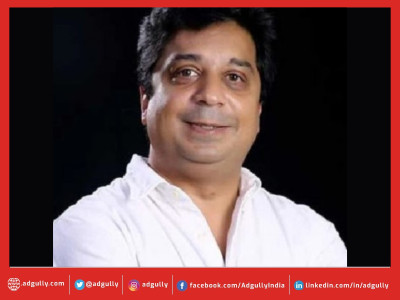
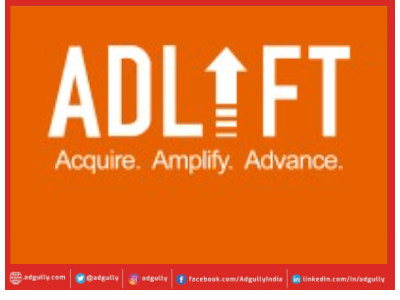

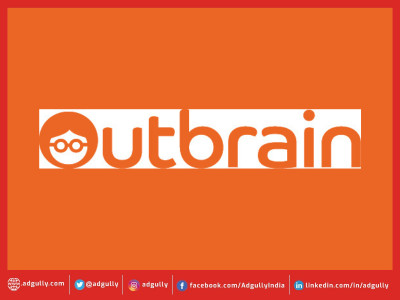

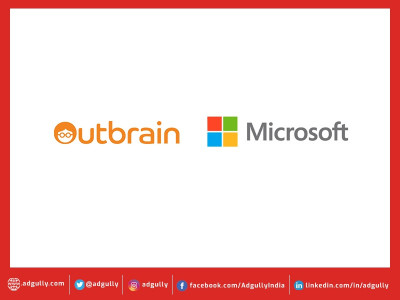
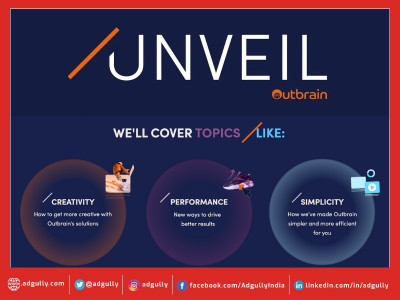
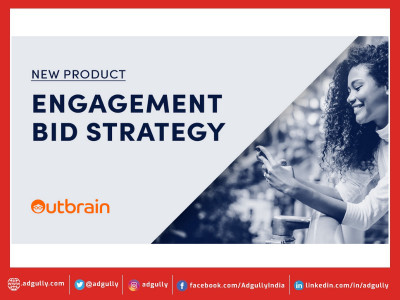



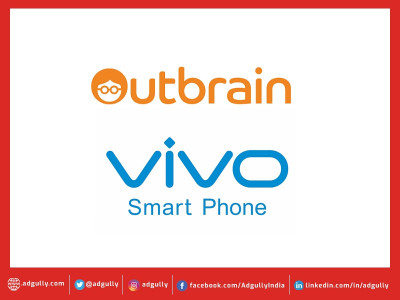


Share
Facebook
YouTube
Tweet
Twitter
LinkedIn